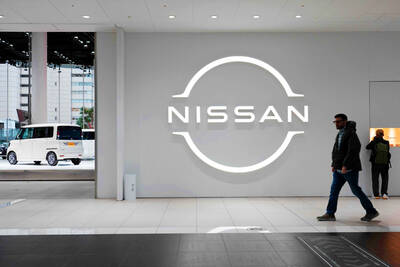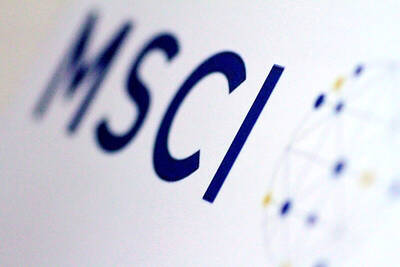Microsoft is laying off 5,000 workers, Intel is closing five fabrication plants and even mighty, can-do-no-wrong Google is slashing perks and laying off recruiters.
But for a Silicon Valley steeled by the 2001 dot-com bust, a recession that could be the longest and deepest in 80 years is not causing panic or prophecies of doom.
Instead, the current troubles are seen as yet another phase of creative destruction in the boom and bust cycle that has characterized the region ever since it started its transformation in the middle of the 20th century from a valley of orange groves into a global technological hot-bed.
That history is based on a ruthless dedication to innovation, a relentless belief in the transformative power of technology, a talent pool that draws brilliant people from around the world and a venture-capital system that fosters thousands of start-up companies in the hope that just a handful of them will eventually strike gold.
The system proved itself in the aftermath of the dot-com bust, which saw thousands of firms bite the dust, and prompted some 200,000 layoffs in the region.
Out of the multibillion-dollar ruins of businesses like Pets.com sprang the behemoth that is Google, not to mention such trailblazers as YouTube and MySpace. Last year, the region lost 11,700 tech jobs, and thousands more layoffs have been announced just this month, with the local unemployment rate already at 7.8 percent.
“It is a very severe cycle, but it’s not a business model gone bad,” said Stephen Levy of the Center for Continuing Study of the California Economy. “It’s a loss of wealth, a decline in consumer spending and the general caution. It’s really different from 2000, when Silicon Valley was leading the recession because all those companies had gone bankrupt.”
As it prepares for a new phase of growth, Silicon Valley is looking further afield than the Iinternet. Its goal is to become the vanguard of green innovation in the US and around the world.
One only has to cruise the freeways to see the results of the US$3.3 billion that US venture capitalists invested last year in green energy startups — with more than 60 percent of the cash coming to Silicon Valley. Investments like a US$300 million bet on startup NanoSolar or a US$90 million injection into Solyndra, another solar energy firm, have already produced a relative boom in alternative energy employment in Silicon Valley, making it the epicenter of thin-film solar cells, which could revolutionize the way solar energy is produced.
Even as Intel closes its last chip factory in Silicon Valley, clean technology innovation is sprouting new manufacturing in the birthplace of the semiconductor, after a long trend of production outsourcing to Asia. But not all is well, as the credit crisis has dried up venture capital and impeded the huge investments needed for major alternative-energy projects.
Hopes are high, however, that a gargantuan federal stimulus package will change this dynamic.
Details of the stimulus are yet to be worked out. But there is little doubt that new US President Barack Obama’s administration intends to act against climate change, and the development of alternative energies will help Silicon Valley catch up and possibly overtake rivals in Europe and Asia, where government incentives have fuelled advances.
“Weakened capital markets and low demand will continue to constrain new project investment in 2009,” says Alex Klein, research director at Emerging Energy Research. “But the fundamentals for a significant transformation in energy infrastructure — and the corresponding investment opportunity — over the long term remain sound.”
For now, however, the transformation is painful.
Every day, the papers are filled with stories of people losing their jobs and their homes, car dealers going out of business, companies struggling to pay workers and city and state governments facing huge deficits.
The economic disruption has had a life-changing impact on folks like Concepcion Urias, who owns a small Mexican eatery just down the road from the headquarters of Internet retailing giant eBay. The business slowdown forced her to cut hours for her two employees, just as rent went up on her humble restaurant, and her loan payments on her home are set to rise.
“This restaurant was my dream. But now I’m not sure what to do to save it,” said Urias, 47, who came to the US from Mexico in 1977.

PERSISTENT RUMORS: Nvidia’s CEO said the firm is not in talks to sell AI chips to China, but he would welcome a change in US policy barring the activity Nvidia Corp CEO Jensen Huang (黃仁勳) said his company is not in discussions to sell its Blackwell artificial intelligence (AI) chips to Chinese firms, waving off speculation it is trying to engineer a return to the world’s largest semiconductor market. Huang, who arrived in Taiwan yesterday ahead of meetings with longtime partner Taiwan Semiconductor Manufacturing Co (TSMC, 台積電), took the opportunity to clarify recent comments about the US-China AI race. The Nvidia head caused a stir in an interview this week with the Financial Times, in which he was quoted as saying “China will win” the AI race. Huang yesterday said

Nissan Motor Co has agreed to sell its global headquarters in Yokohama for ¥97 billion (US$630 million) to a group sponsored by Taiwanese autoparts maker Minth Group (敏實集團), as the struggling automaker seeks to shore up its financial position. The acquisition is led by a special purchase company managed by KJR Management Ltd, a Japanese real-estate unit of private equity giant KKR & Co, people familiar with the matter said. KJR said it would act as asset manager together with Mizuho Real Estate Management Co. Nissan is undergoing a broad cost-cutting campaign by eliminating jobs and shuttering plants as it grapples

The Chinese government has issued guidance requiring new data center projects that have received any state funds to only use domestically made artificial intelligence (AI) chips, two sources familiar with the matter told Reuters. In recent weeks, Chinese regulatory authorities have ordered such data centers that are less than 30 percent complete to remove all installed foreign chips, or cancel plans to purchase them, while projects in a more advanced stage would be decided on a case-by-case basis, the sources said. The move could represent one of China’s most aggressive steps yet to eliminate foreign technology from its critical infrastructure amid a

MORE WEIGHT: The national weighting was raised in one index while holding steady in two others, while several companies rose or fell in prominence MSCI Inc, a global index provider, has raised Taiwan’s weighting in one of its major indices and left the country’s weighting unchanged in two other indices after a regular index review. In a statement released on Thursday, MSCI said it has upgraded Taiwan’s weighting in the MSCI All-Country World Index by 0.02 percentage points to 2.25 percent, while maintaining the weighting in the MSCI Emerging Markets Index, the most closely watched by foreign institutional investors, at 20.46 percent. Additionally, the index provider has left Taiwan’s weighting in the MSCI All-Country Asia ex-Japan Index unchanged at 23.15 percent. The latest index adjustments are to